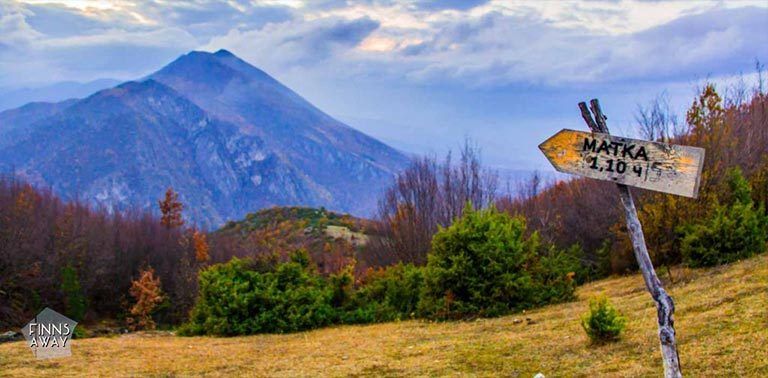
Matka Canyon – outdoor gem next to Skopje
When you are planning a trip to North Macedonia and its multi-faced capital city Skopje, don’t leave Matka Canyon out of your travel plan. This gorgeous site is situated just 15 kilometers out of the city, and offers outdoor activities with awesome scenery and diverse flora and fauna, including endemic species. There are also some interesting medieval buildings to visit. Matka Canyon is a popular getaway for locals and tourists alike. During hot summer months the air is a bit cooler up there, and swimming in the lake offers refreshment.
The canyon area covers roughly 5000 hectares, and besides the canyon itself, there is artificial Lake Matka and dozen caves, from 20 to 176 meters long. The most well known is the Vrelo Cave, that is listed as one of the top natural sites in the New7Wonders of Nature project. Alpine hiking, climbing, cave tours to see stalagmites, stalactites, drip-stone pillars and cave lakes, boat trips, kayaking in the gorge of Treska River, fishing – there are plenty of options for adventurous travelers. There are also Monasteries with frescoes, churches and remnants of a fortress in the medieval town of Matka. You can find also restaurants, bars, cafes and even accommodation options for those who want to stay longer.
After the busy summer season, the canyon quiets down, the air gets cooler but the beauty remains. Autumn colors dye the slopes with orange and the water looks even greener against that background. We stayed two weeks in Skopje in early November, and visited the canyon area twice. We saw only few fellow visitors, and got the hiking trails mostly just for ourselves. Restaurants seemed to be still open, though very quiet, and boat tours were still available.
Hiking trails in Matka Canyon
When arriving in the canyon along the road, restaurants and other services, together with Monastery St. Andrea, are on the right hand side of the canyon, not far away from the parking area and bus stop. On this side there is a walking route following the canyon wall. This is an easy trek; the wide path with railing goes close to the water level with no big elevation changes. But the views are really nice along the way. The railing ends after about 4,5 km, but the path continues further. We turned back after 5 km, and learned later that after 6 km there would have been another dam in the river, but we are not sure if the path continues still after that.
On the left side of the canyon there are more steep hiking trails leading to the hills above the canyon. We hiked up along the red marked trail and up on top of the ridge, where we could see Skopje on the other side. The path would have continued until the Millennium Cross that is standing over Skopje, so it is very well possible to hike over the mountains from Skopje to Matka. The Vodno Mountain, where the huge cross stands, is full of paths for hiking, trail running and mountain biking, and so close to the city that you can simply just run there. Or take a bus and a cable car to reach the cross and start your hike from the top. We made a somewhat exhausting, but fun trail run up to the cross from Skopje and back to town, with a breath-taking 815 vertical meters ascent.
How to get to Matka Canyon
As explained, one rewarding and very scenic option is to hike to Matka from Skopje or from the Millennium Cross. Hiking all the way from Skopje to Matka would take maybe 5-7 hours. If starting the hike from the cross, it is about 11 km mostly downhill to the canyon, so roughly 2 -3 hours, depending on your pace of course. St. Nikola Monastry can be visited on the way down to the canyon.
To get back to the city, you could take bus; bus number 60 operates frequently to Matka from Transporten Centar next to international bus and train station in Skopje. One way ticket costs 35 MKD so just about 0,60 € and the trip takes 30-40 minutes. For a less demanding day trip just take a bus from Skopje and back, and enjoy the views along the trails near the canyon walls, or on a boat trip in the canyon.





